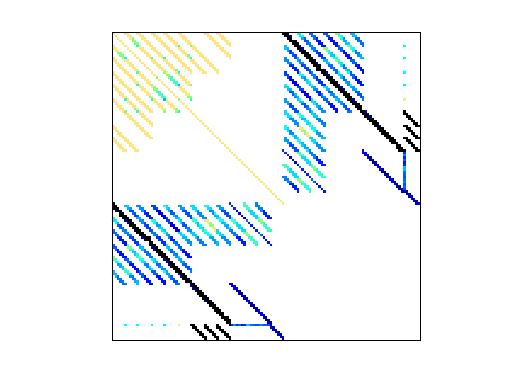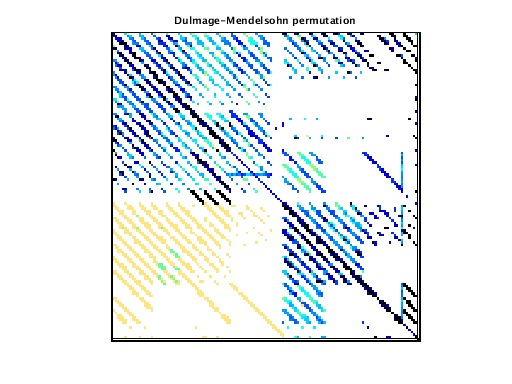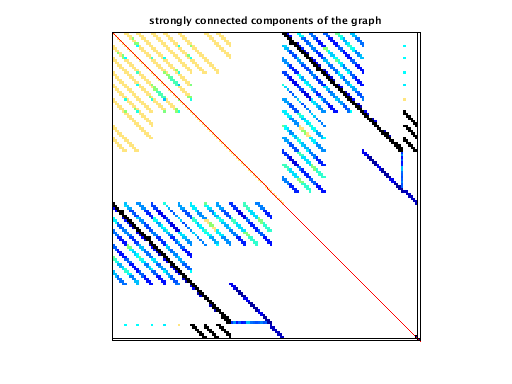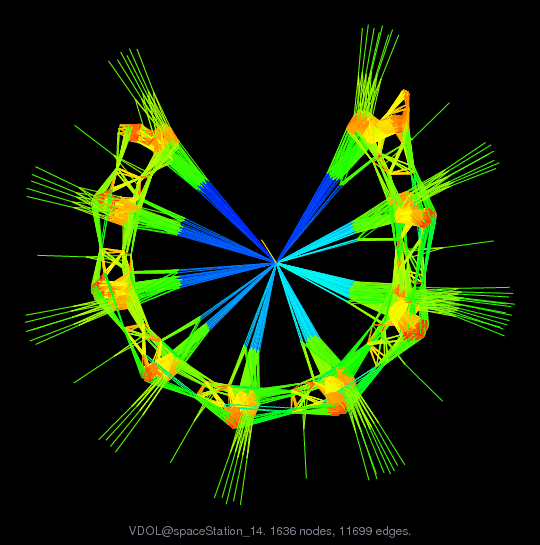VDOL/spaceStation_14
spaceStation optimal control problem (matrix 14 of 14)
| Name |
spaceStation_14 |
| Group |
VDOL |
| Matrix ID |
2747 |
|
Num Rows
|
1,640 |
|
Num Cols
|
1,640 |
|
Nonzeros
|
24,324 |
|
Pattern Entries
|
24,324 |
|
Kind
|
Optimal Control Problem |
|
Symmetric
|
Yes |
|
Date
|
2015 |
|
Author
|
B. Senses, A. Rao |
|
Editor
|
T. Davis |
| Structural Rank |
1,640 |
| Structural Rank Full |
true |
|
Num Dmperm Blocks
|
7 |
|
Strongly Connect Components
|
3 |
|
Num Explicit Zeros
|
0 |
|
Pattern Symmetry
|
100% |
|
Numeric Symmetry
|
100% |
|
Cholesky Candidate
|
no |
|
Positive Definite
|
no |
|
Type
|
real |
| Download |
MATLAB
Rutherford Boeing
Matrix Market
|
| Notes |
Optimal control problem, Vehicle Dynamics & Optimization Lab, UF
Anil Rao and Begum Senses, University of Florida
http://vdol.mae.ufl.edu
This matrix arises from an optimal control problem described below.
Each optimal control problem gives rise to a sequence of matrices of
different sizes when they are being solved inside GPOPS, an optimal
control solver created by Anil Rao, Begum Senses, and others at in VDOL
lab at the University of Florida. This is one of the matrices in one
of these problems. The matrix is symmetric indefinite.
Rao, Senses, and Davis have created a graph coarsening strategy
that matches pairs of nodes. The mapping is given for this matrix,
where map(i)=k means that node i in the original graph is mapped to
node k in the smaller graph. map(i)=map(j)=k means that both nodes
i and j are mapped to the same node k, and thus nodes i and j have
been merged.
This matrix consists of a set of nodes (rows/columns) and the
names of these rows/cols are given
Anil Rao, Begum Sense, and Tim Davis, 2015.
VDOL/spaceStation
Space station attitude optimal control problem is taken from
Ref.~\cite{betts2010practical}. The goal of the space station
attitude control problem is to determine the state and the control
that minimize the magnitude of the final momentum while the space
statition reaches an orientation at the final time that can be
maintained without utilizing additional control torque. The state of
the system is defined by the angular velocity of the spacecraft with
respect to an inertial reference frame, Euler-Rodriguez parameters
used to defined the vehicle attitude, and the angular momentum of the
control moment gyroscope and the control of the system is the torque.
The specified accuracy tolerance of $10^{-7}$ were satisfied after
thirteen mesh iterations. As the mesh refinement proceeds, the size
of the KKT matrices increases from 99 to 1640.
|



